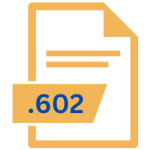.GRAPH File Extension

GRAPH Hierarchical Data File
| Developer | temper-studios |
| Popularity | |
| Category | Text Files |
| Format | .GRAPH |
| Cross Platform | Update Soon |
What is an GRAPH file?
The .GRAPH file extension represents a specific file format used primarily for storing and manipulating graph data.
Graphs, in this context, refer to mathematical representations of relationships between entities, such as nodes and edges, and are commonly used in various fields, including mathematics, computer science, social network analysis, and data visualization.
.GRAPH files are designed to contain structured data that defines the elements and connections within a graph.
More Information.
The history of .GRAPH files can be traced back to the emergence of graph theory and its practical applications. Graph theory is a branch of mathematics that deals with the study of graphs, which are mathematical structures used to model relationships between objects.
Graphs are widely used in computer science for tasks such as network analysis, data visualization, and routing algorithms.
The initial purpose of .GRAPH files was to provide a common and portable format for storing graph data. Researchers and software developers recognized the need for a standardized way to exchange and analyze graph-related information.
.GRAPH files were created to address this need and facilitate the sharing of graph data across different applications and platforms.
Origin Of This File.
The origin of the .GRAPH file extension is closely tied to the need for a standardized format to store and exchange graph data efficiently.
While the specific creator or organization behind this file format remains unclear, it has gained prominence in the realm of graph-related software applications and research.
File Structure Technical Specification.
To work effectively with .GRAPH files, it is crucial to understand their file structure and technical specifications.
These files are typically binary, meaning they are not easily human-readable when opened in a text editor. Instead, they contain structured data organized in a specific format that can be interpreted by compatible software.
The technical specifications of .GRAPH files may vary depending on the software that generates or uses them.
Common elements found in .GRAPH files include:
- Node Information: This section includes data about the nodes or entities in the graph, such as their labels, attributes, and positions.
- Edge Information: Information about the connections between nodes, including edge labels, weights, and directions, is stored in this section.
- Graph Metadata: Various metadata, such as file version, creator information, and graph properties, may be embedded within .GRAPH files.
- Data Formats: .GRAPH files may support different data formats, including directed and undirected graphs, as well as weighted and unweighted edges.
- Serialization Format: These files are often serialized using a specific format like binary, JSON, or XML, depending on the software’s requirements.
How to Convert the File?
Converting .GRAPH files can be necessary when you want to use the data in a different format or with software that does not support this specific file type.
Here are some methods to convert .GRAPH files:
Using Compatible Software:
- Identify the Right Software: Start by identifying software that supports the .GRAPH file format. Many graph analysis and visualization tools offer import and export functionality for different file formats, including .GRAPH.
- Open the .GRAPH File: Launch the compatible software and open the .GRAPH file by selecting “Open” or a similar option within the application’s interface.
- Export to a Different Format: Once the .GRAPH file is open, go to the “File” or “Export” menu and select the format you want to convert the file to. Common formats for graph data include GraphML, GEXF, CSV, or others, depending on your needs.
- Configure Conversion Settings: Depending on the chosen format, you may have the option to configure settings related to the export process, such as selecting which graph elements to include or specifying data formatting.
- Save the Converted File: After configuring the settings, choose a location on your computer to save the converted file. Provide a suitable file name and click “Save” or “Export.”
- Confirmation: The software should confirm that the conversion was successful. You now have a copy of the .GRAPH file in the desired format.
Third-Party Converters:
- Search for a Converter: Look for third-party file conversion tools specifically designed to convert .GRAPH files to other formats. These converters may be available online or as downloadable software.
- Download and Install: If you find a suitable converter, download and install it on your computer following the provided instructions.
- Open the Converter: Launch the converter software, and you should see options for selecting the source .GRAPH file and the desired output format.
- Convert the File: Follow the on-screen instructions to select the .GRAPH file you wish to convert and specify the format you want to convert it into.
- Conversion Process: Initiate the conversion process, and the software will typically generate the converted file in the chosen format.
- Save the Converted File: Once the conversion is complete, save the converted file to your preferred location on your computer.
Advantages And Disadvantages.
Advantages:
- Efficiency: .GRAPH files are designed to efficiently store graph data, making them suitable for large-scale network analysis.
- Structured Data: These files provide a structured and organized format for storing graph-related information, simplifying data management.
- Interoperability: Many graph-related software applications and libraries support the .GRAPH file format, ensuring compatibility across different platforms and systems.
- Customization: .GRAPH files can accommodate various types of graphs, including directed, undirected, weighted, and unweighted graphs, allowing for flexibility in data representation.
Disadvantages:
- Complexity: .GRAPH files are binary and may have a complex structure, making them challenging to work with without specialized software.
- Lack of Human-Readability: The binary nature of .GRAPH files means they are not easily human-readable, limiting their usefulness for manual inspection or editing.
- Compatibility Issues: While many graph-related software applications support .GRAPH files, compatibility issues can still arise when dealing with different versions or software implementations.
How to Open GRAPH?
Open In Windows
- Graph Software: Use graph analysis or visualization software like Gephi, Cytoscape, or yEd, which often support the .GRAPH file format. Follow these steps:
- Launch the software.
- Go to the “File” menu and select “Open” or use the respective keyboard shortcut.
- Browse to the location of the .GRAPH file, select it, and click “Open.”
- The software will display the graph data contained within the .GRAPH file.
- Third-Party Converters: Some third-party conversion tools may help you open .GRAPH files or convert them to more accessible formats. If you’ve converted the file to a common format like GraphML or CSV, you can use software that supports those formats.
Open In Linux
- Graph Tools: Install graph analysis and visualization tools available for Linux, such as Gephi or Cytoscape, which often support the .GRAPH file format. Follow the same steps as outlined for Windows.
Open In MAC
- Graph Visualization Software: On macOS, you can use graph visualization software like Gephi, Cytoscape, or yEd to open .GRAPH files. Follow the same steps as outlined for Windows.
Open In Android
Mobile Apps: Check if there are Android apps designed for graph analysis or visualization that can handle .GRAPH files. Install these apps on your Android device, and then:
- Launch the app.
- Use the app’s file browser to locate and open the .GRAPH file.
- The app will display the graph data contained within the file.
Open In IOS
iOS Apps: Look for iOS apps designed for graph analysis and visualization that support the .GRAPH file format. Install these apps on your iOS device, and then:
- Launch the app.
- Use the app’s file browser to locate and open the .GRAPH file.
- The app will display the graph data contained within the file.













